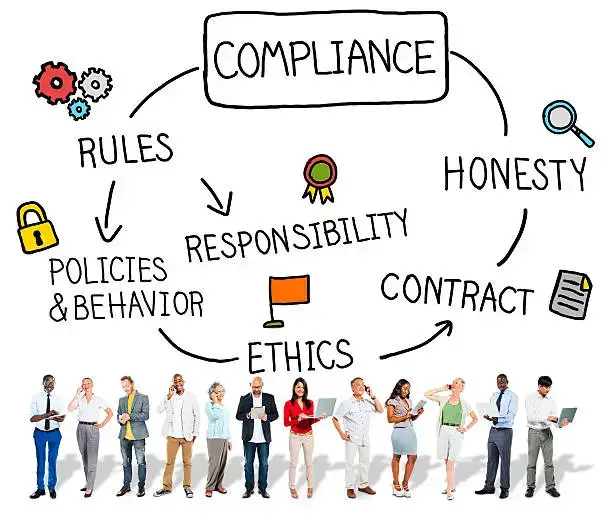How corporate finance strategy Drive Business Growth in 2026
Table of Contents
Introduction: The Evolving Objective of Corporate Finance

So here’s the thing – for pretty much forever, corporate finance has had one job: make shareholders richer. That’s it. Every decision, every strategy, everything came down to one question: “Will this pump up returns for the people who own stock?” Simple, right? get more info about Top Small Businesses Banking Now;
But lately? Things are getting way more interesting (and complicated). We’re seeing this massive shift where companies are realizing they don’t exist in a vacuum. Every business decision affects employees, customers, the planet, local communities – you name it. Welcome to stakeholder capitalism, folks.
This isn’t just some trendy buzzword that’ll fade away. It’s demanding a complete overhaul of how we think about corporate finance strategy, how we distribute resources, and how we even measure success. So buckle up, because in this article, we’re diving deep into this shift and figuring out what it actually means for finance pros trying to drive business growth finance in today’s wild business world.
Defining the New Financial Mandate: Shareholder Primacy vs. Stakeholder Strategy

Understanding the Traditional Theory
Let’s start with Finance 101. The old-school approach was beautifully simple: boost profits, make shareholders happy, rinse and repeat. Every choice about capital structure, financing, investments, dividends, and company valuation? All filtered through that one lens.
And honestly, this approach worked for a long time! It gave everyone clear goals and measurable results. But here’s the catch – it kinda ignored everyone else who was affected by those decisions. Oops.
What is Stakeholder Capitalism?
Okay, so stakeholder capitalism is basically the new kid on the block saying, “Hey, maybe we should think about EVERYONE, not just the shareholders?” Revolutionary, I know.
When you’re mapping out your corporate finance strategy these days, you’ve gotta think about:
- Investors and Creditors: Yeah, shareholders still matter (duh), but they’re not the only game in town anymore
- Employees: The amazing humans actually doing the work – they deserve fair pay and opportunities to grow
- Customers: The people buying your stuff want quality AND want to feel good about supporting your company
- Society and the Planet: Turns out, destroying the environment and communities is bad for business (who knew?)
The Financial Imperative: Why Stakeholder Focus Pays Off
Now, before you think this is all just feel-good nonsense, let me hit you with some numbers that’ll blow your mind.
Take Microsoft. They could’ve just focused on quarterly earnings, but instead they went all-in on cloud computing with Azure and AI. Were shareholders happy? Uh, yeah – the stock jumped over 700% by 2024! That’s what I call a smart corporate finance strategy that looked beyond next quarter’s results.
Or check out Unilever. Their sustainable product lines grew 50% faster than their regular stuff. Why? Because customers actually care about this stuff and vote with their wallets. This isn’t charity – it’s seriously good business.
Implementing ESG Factors and Optimizing Financial Performance

Leveraging ESG to Lower the Cost of Capital
Here’s where it gets really cool from a finance nerd perspective. ESG (Environmental, Social, and Governance) stuff isn’t just nice to have anymore – it’s straight-up affecting how much money costs.
Banks and investors are looking at companies with strong ESG track records and thinking, “These guys are less risky.” And when lenders think you’re less risky, they give you better rates. It’s that simple. So if you’ve got a solid ESG game, you might be borrowing at 5% instead of 6%. That extra percentage point? That’s real money you can reinvest in growing your business.
For anyone dealing with corporate banking USA institutions, this is becoming a huge deal. Your ESG performance is literally showing up in your loan terms now.
Redefining Value Creation Through Strategic Financial Decisions
Modern business growth finance means getting strategic about where your money goes. It’s not just about the highest return anymore – it’s about the highest smart return that considers the bigger picture.
Resource Allocation: Sure, you want good returns, but now you’re also thinking about things like employee happiness and environmental impact. These aren’t separate from financial returns – they’re actually drivers of long-term value.
Portfolio Management: Risk management isn’t just about diversifying stocks anymore. Maybe you’re investing in clean tech or workforce development programs because they’ll pay off down the road (and also happen to be the right thing to do – win-win!).
Strategic Trade-offs: The balancing act is trickier now, but honestly? It’s way more interesting. You’re looking at risk and return through this holistic lens that actually reflects how the real world works.
New Metrics and Tools for Stakeholder-Driven Financial Planning (FP&A)

Key Performance Indicators (KPIs) for Long-Term Value Creation
Alright, so if we’re expanding what “success” means, we need new ways to measure it, right? FP&A teams are crushing it on this front.
Here’s what smart companies are tracking now:
- Employee Retention Rates: Are your people sticking around? High retention means you’re not hemorrhaging money on recruiting and training, plus you’re keeping all that institutional knowledge that makes your company valuable
- Customer Satisfaction Scores: Happy customers = future revenue. Revolutionary concept, I know
- ESG-Adjusted Cost of Capital: This one’s fancy, but it’s basically tracking how your sustainability performance affects your borrowing costs
These metrics give you the full picture instead of just looking at this quarter’s profits and calling it a day.
The Power of Scenario Analysis in Stakeholder Decisions
Scenario analysis is like your financial crystal ball, and it’s perfect for this stakeholder stuff. Instead of just looking at upfront costs, you’re modeling out all the angles.
Let’s say you’re thinking about installing solar panels. Old-school finance would just compare the installation cost to energy savings. Boring!
But scenario analysis lets you factor in everything: lower energy bills, government subsidies, the PR boost from going green, happier employees who like working for a company that cares – all of it. When you run the numbers with all these factors? Suddenly that “expensive” solar project looks like a no-brainer for business growth finance.
You can use good old NPV and IRR calculations for this stuff, just with a broader view of what counts as a “return.”
Navigating Complexity: Behavioral Finance, Ethics, and Governance

Overcoming Cognitive and Emotional Biases
Here’s where things get real: even the best corporate finance strategy can get torpedoed by basic human psychology. We’re all prone to mental shortcuts that can lead us astray.
Overconfidence: You know that manager who’s convinced their acquisition idea is genius? That’s overconfidence bias, and it’s led to some spectacularly expensive failures. The fix? Get diverse opinions and actually listen to the skeptics.
Confirmation Bias: Remember Enron? Yeah, there were red flags everywhere, but people only paid attention to information that confirmed what they wanted to believe. Don’t be that person. Actively seek out information that challenges your assumptions.
Upholding Integrity: Transparency and Accountability
Look, transparency isn’t just about avoiding jail time (though that’s nice too). It’s about building trust with everyone who cares about your company – and these days, that’s a lot of people.
Playing by the rules (hi, SEC!) and being ethical isn’t just legally smart – it’s financially smart. If you’re working with corporate banking USA partners, they expect impeccable ethics. No wiggle room there.
And here’s the thing: ethical leadership sets the tone for everyone. When finance leaders walk the talk on integrity, it creates a culture where doing the right thing is just how things are done.
Advancing Your Career in the Stakeholder Economy

Essential Skills for the Modern Corporate Finance Professional
So you wanna succeed in this new world? You’ll need to level up beyond just crunching numbers (though you still gotta be good at that, obviously).
Data Storytelling: Being able to explain complex financial stuff in a way that actually makes sense to regular humans? That’s the skill. You’re not just analyzing – you’re painting a picture that helps people understand why stakeholder-focused decisions make financial sense.
Strategic Influence: The days of finance people just sitting in the corner doing calculations are over. Now you need to be the person challenging assumptions, pushing for deeper analysis, and basically having a seat at the strategy table. Think corporate finance strategy consulting, but as an insider.
Continuous Learning: AI, machine learning, cloud computing – this stuff is changing fast, and you gotta keep up. The finance pros who thrive are the ones constantly learning and adapting.
Key Professional Credentials for Career Advancement
Certifications aren’t mandatory, but they definitely help you stand out. Here are the heavy hitters:
CFA (Chartered Financial Analyst): This is the gold standard for investment analysis. It’s tough, it’s globally respected, and it covers everything from valuation to ethics. Great for anyone serious about business growth finance strategy.
CMA (Certified Management Accountant): Perfect for FP&A folks. It’s all about management accounting, financial planning, and decision support – exactly what you need for stakeholder capitalism.
FRM (Financial Risk Manager): Risk management is more complex than ever with ESG factors in the mix. This certification shows you know your stuff when it comes to identifying and managing all kinds of risks.
Conclusion: Reframing the Narrative of Success
Here’s the bottom line: the future belongs to companies that figure out how to create value for everyone, not just shareholders. And guess what? Serving all stakeholders actually IS the best way to create long-term shareholder value. They’re not opposing goals – they work together.
For finance professionals, this is your moment. You’ve got the skills, the insights, and the influence to guide your company toward a sustainable future. The question is: are you gonna step up?
The best corporate finance strategy in 2026 isn’t about picking sides between shareholders and stakeholders. It’s recognizing that taking care of stakeholders is how you create lasting value. By weaving in ESG considerations, tracking the metrics that actually matter, staying ethical, and constantly improving your skills, you become irreplaceable.
The story of corporate success is being rewritten right now. So… you in?
How corporate finance strategy Drive Business Growth in 2026
So here’s the thing – for pretty much forever, corporate finance has had one job: make shareholders richer. That’s it. Every decision, every strategy, everything came down to one question: “Will this pump up returns for the people who own stock?” Simple, right? get more info about Top Small Businesses Banking Now;


